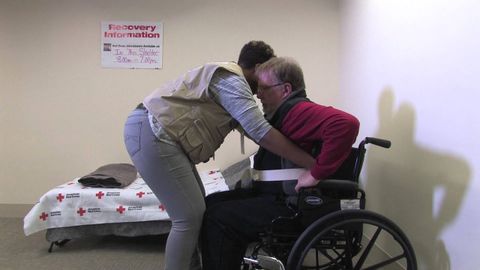護理助理培訓,模塊 2:轉移協助 (Care Assistant Training, Module 2: Transfer Assistance)
Horace 發佈於 2024 年 08 月 08 日  沒有此條件下的單字
沒有此條件下的單字US /ˌsɪtʃuˈeʃən/
・
UK /ˌsɪtʃuˈeɪʃn/
US /ˈslaɪtli/
・
UK /ˈslaɪtli/
- adj.異性戀者;異性戀的;率直的;立刻的;直的;整齊的
- adv.筆直地;立刻地;誠實地;直接地;立即
- n.異性戀者
- v.t./i.弄直
US /dɪˈtɚmɪn/
・
UK /dɪ'tɜ:mɪn/
